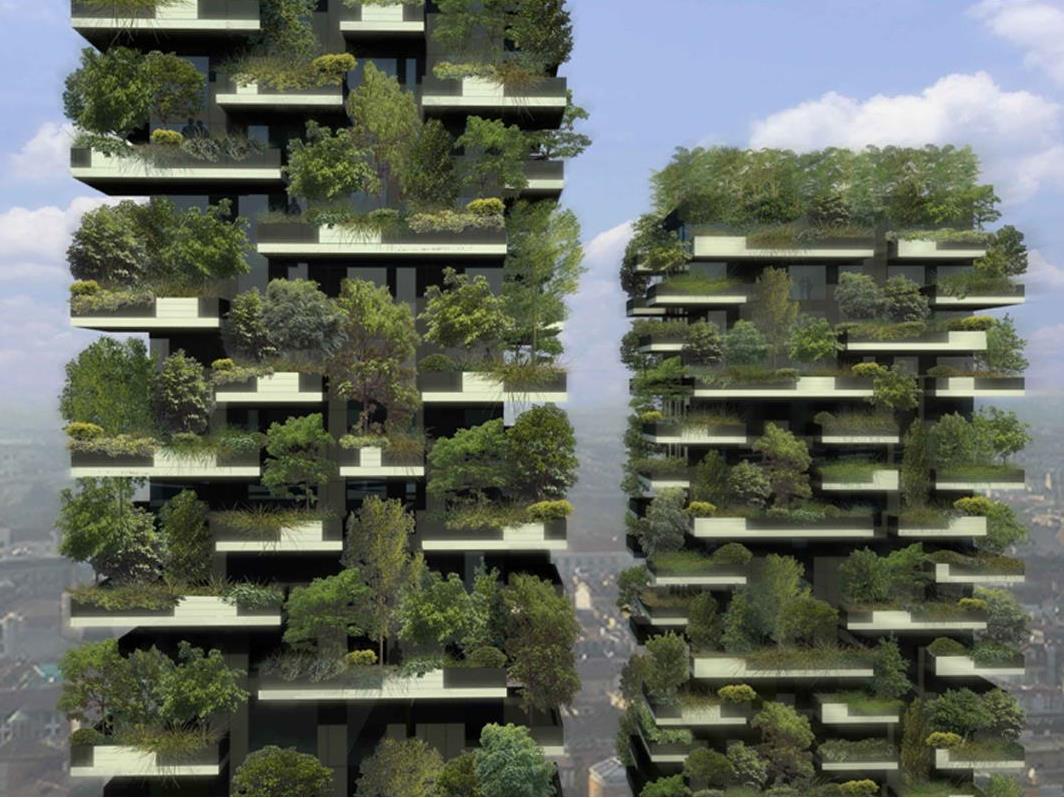Bosco Verticale Milano, Italy. Picture: www.stefanoboeriarchitetti.net
The world’s ‘first vertical forest’: a towering 10,000 square metres of green rising up towards the sky, Bosco Verticale in Milan, Italy, is earmarked for completion by the end of the year.
It appears to have kept faith with architects Boeri Studio’s original vision for a sustainable highrise in a concrete jungle. When the scaffolding was dismantled earlier this year, it revealed a framework of two residential towers (measuring 76 and 110 metres tall respectively) with protruding balcony edges, softened – and eventually to be masked — on every level by the lush foliage of 900 trees and more than 2000 plants and shrubs of over 100 species. The idea, said principal architect Stefano Boeri, was to create a humid micro-climate within the cityscape, an environmental counterpoint to the large amounts of C02 emissions produced by buildings. ‘This is a kind of biological architecture that refuses to adopt a strictly technological and mechanical approach to environmental sustainability,’ said Boeri in a statement.
